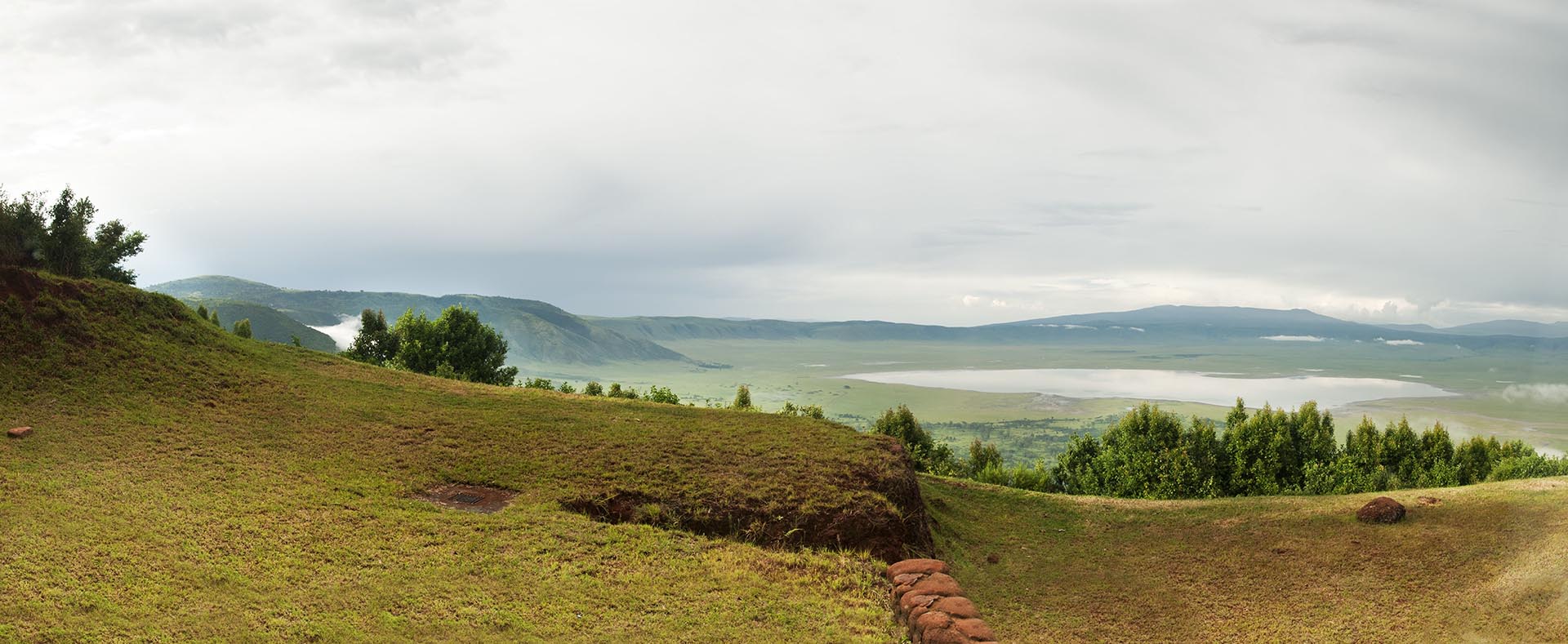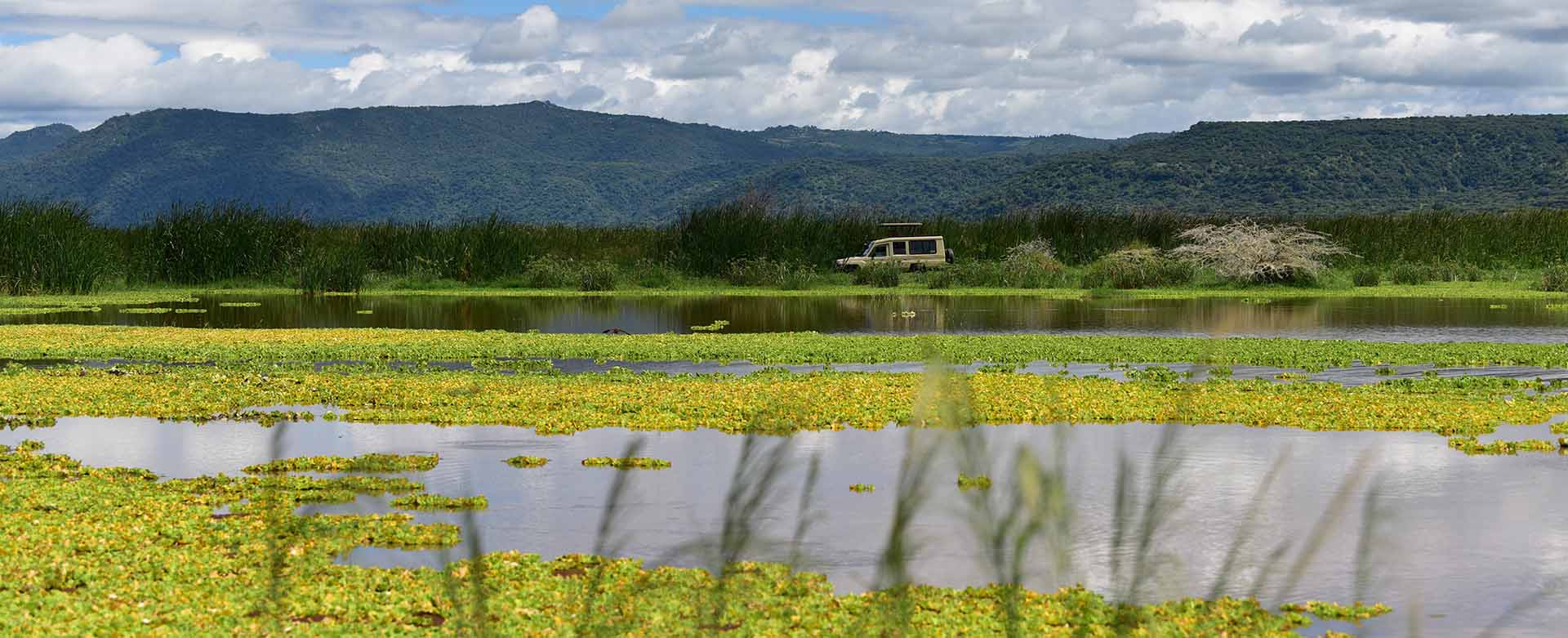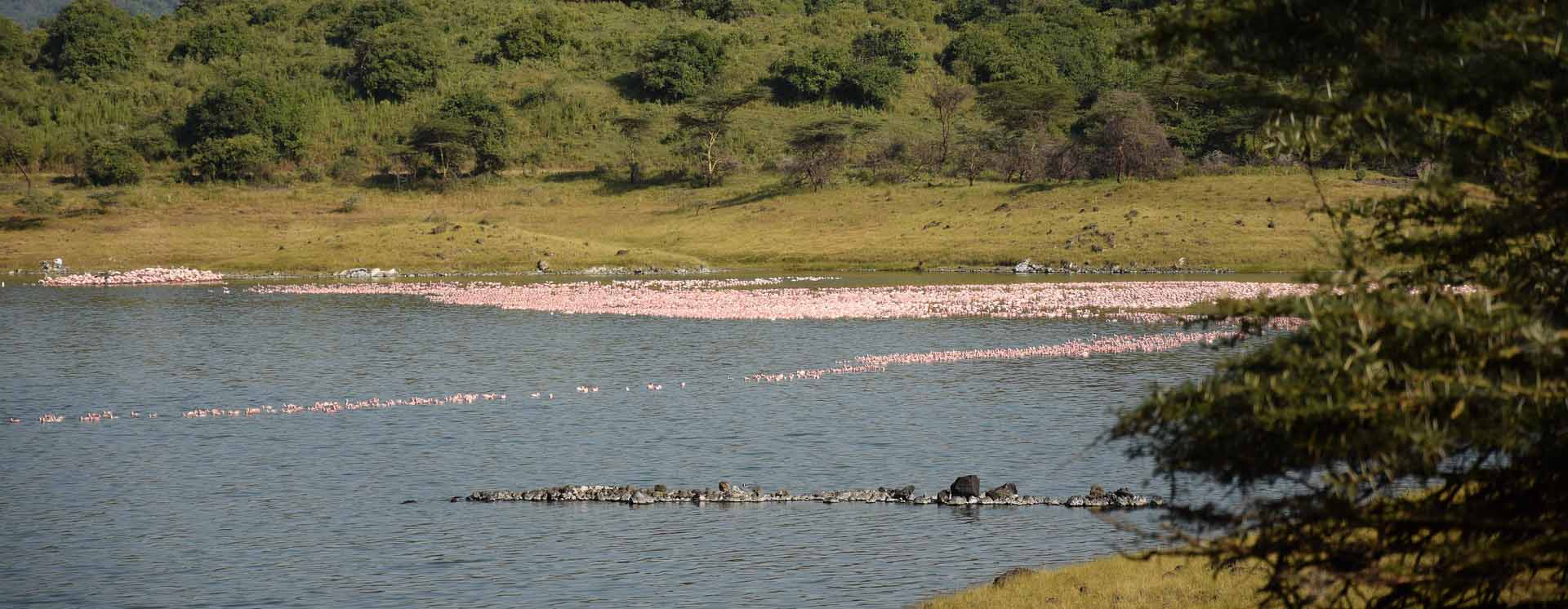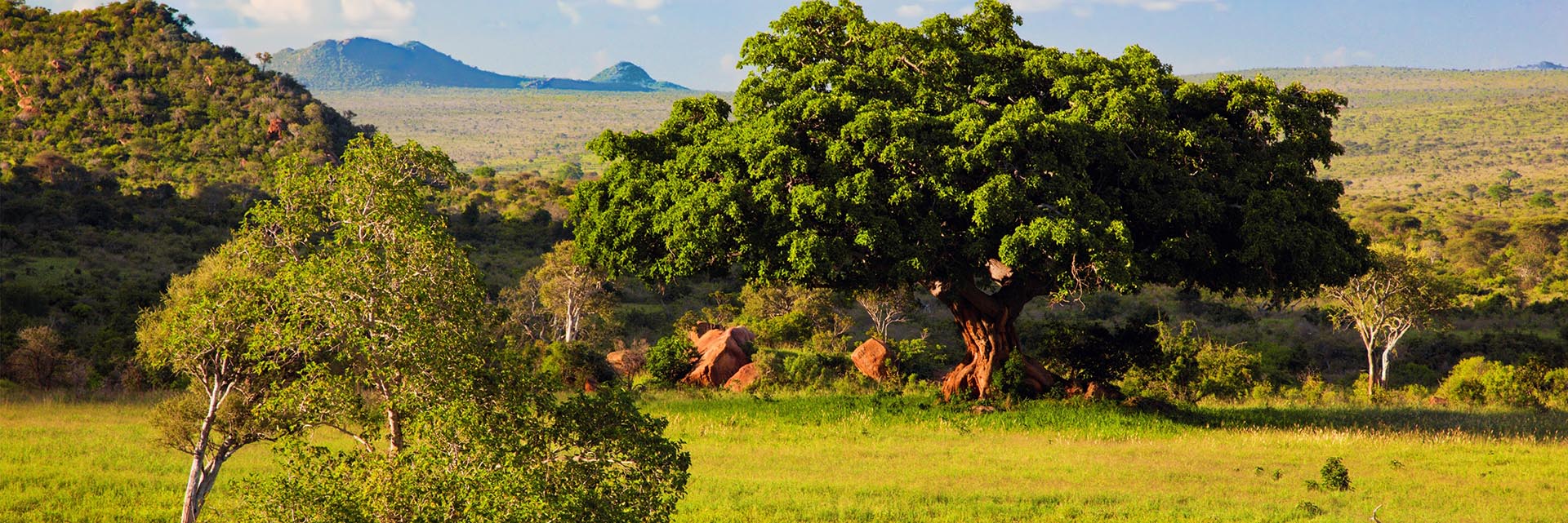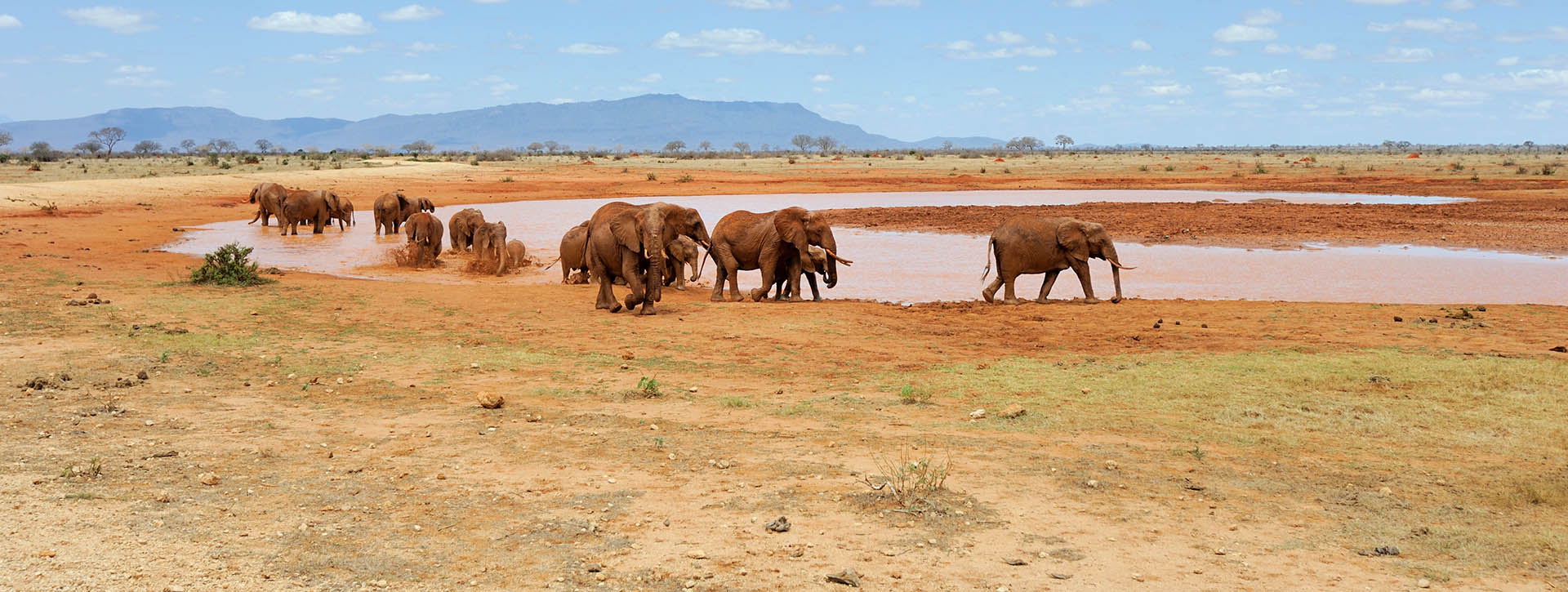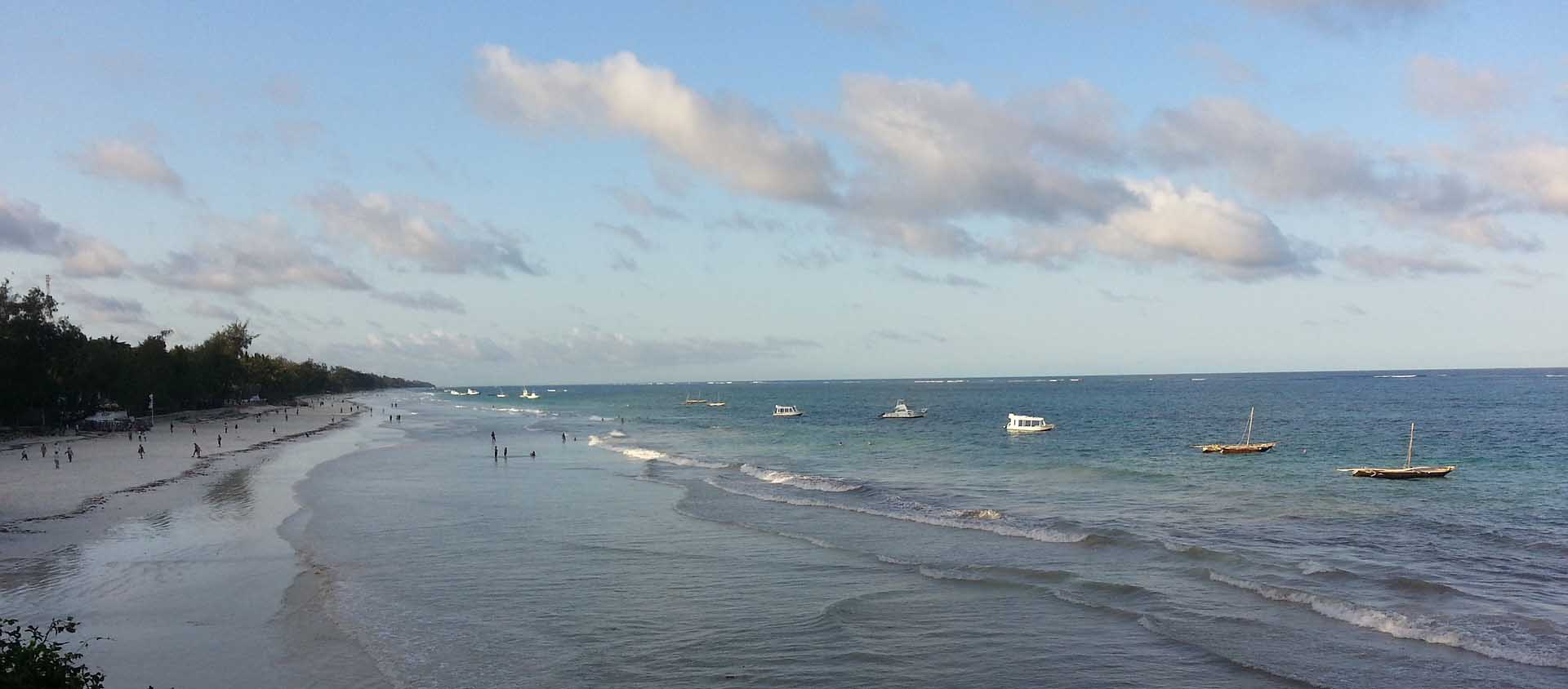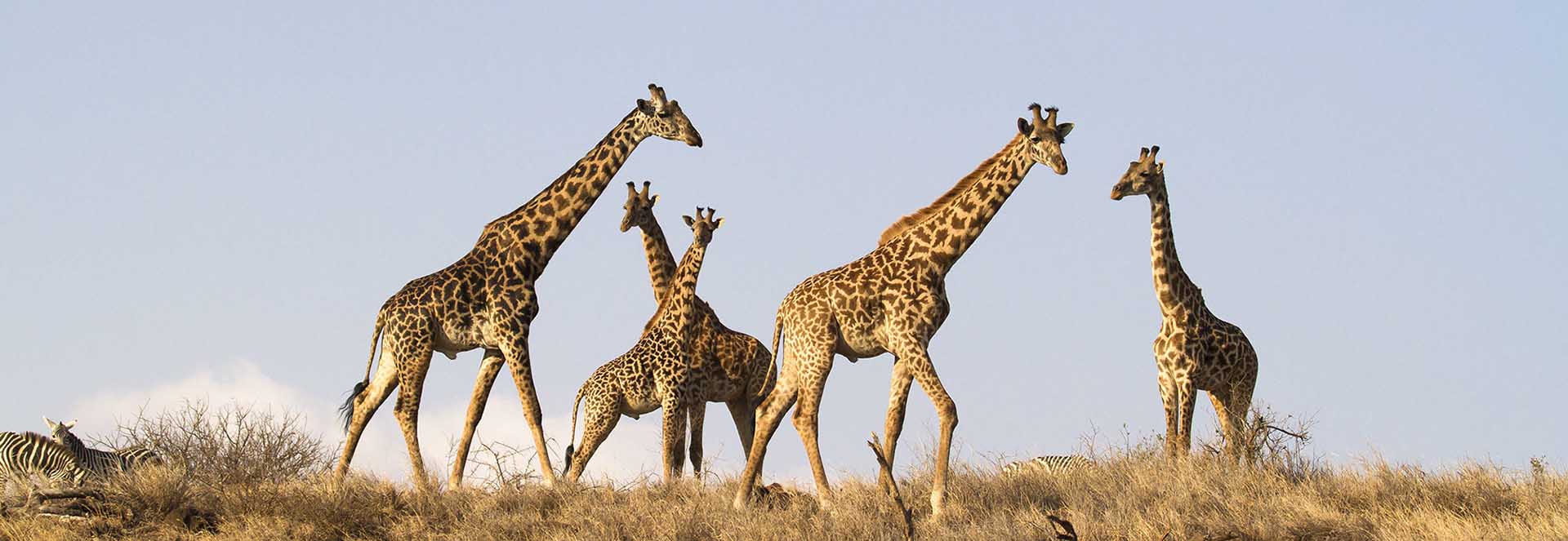Tanzania Top Destinations
Ngorongoro Conservation Area
The Ngorongoro Crater, situated at an elevation of 2,286 meters above sea level, stands as the largest unbroken caldera globally. In ancient times, it may have been comparable in size to Kilimanjaro, but as volcanic activity waned, it collapsed inward, forming a caldera. Encircled by steep walls that ascend 610 meters from the crater floor, this natural amphitheater spans approximately 100 square miles and provides a habitat for around 25,000 larger mammals, with zebras and wildebeests comprising nearly half of the population.
This Crater serves as an African paradise and sanctuary for various wildlife, including lions, elephants, hyenas, gazelles, buffalos, elands, hartebeests, warthogs, and some of the last remaining rhinos in Tanzania. Over 100 bird species, not commonly found in the Serengeti, have been observed here. The Crater’s lake is teeming with thousands of flamingos, adorning the area with the vibrant hues of their pink plumage. Recognized as a World Heritage Site, the Crater holds immense significance. In close proximity lies the Ngorongoro Conservation Area, which houses renowned archaeological sites like Laetoli and Olduvai Gorge, offering visitors a glimpse into our own past. Additionally, one can witness the pastoral Masai community tending to their herds of cattle, sheep, and goats, adorned in their vibrant and traditional attire.
By road:
The journey from Lake Manyara to the Ngorongoro Crater covers a distance of 80km/50mi and typically takes approximately two hours to complete. On the other hand, the drive from Tarangire spans 180km/110mi and usually requires around four hours of travel time. For those planning to reach Arusha, the most convenient choice is to fly into Kilimanjaro International Airport (JRO), located approximately 46km/29mi away from Arusha.
By Air:
Arusha serves as a convenient starting point for exploring the parks of the northern circuit. Travelers have the choice of either taking small aircraft on chartered or scheduled flights or embarking on a safari vehicle to complete the entire circuit.
One popular option is to fly into the Serengeti and then return by safari vehicle, either via the Ngorongoro crater or vice versa. In most cases, your tour operator will arrange for your pickup from the airport. If you are coming from the Seronera area in the Serengeti, the distance to the crater is approximately 140km/90mi, and the journey by road takes around three hours. However, it is important to note that this duration can be extended significantly due to the opportunity for wildlife viewing along the way.
The Ngorongoro Crater in Africa is renowned for its exceptional wildlife viewing opportunities. It boasts a diverse range of safari animals, with abundant populations of all the major species. One of the highlights is the resident population of black rhinos, which is a rare treat considering how elusive they are in other parts of Tanzania. Additionally, the crater is home to magnificent elephant bulls with impressive tusks.
Another spectacle is the presence of large flocks of flamingos in Lake Magadi. Regardless of the time of year, you can always spot wildlife on the crater floor. However, the Dry season from June to October offers optimal viewing conditions as the undergrowth recedes, making it easier to observe animals congregating around waterholes and rivers. The wetter months may have fewer visitors and lower accommodation rates, but the viewing experience is superior during the Dry season.
Ngorongoro Conservation Area boasts a pleasant and moderate climate. The region encounters two distinct Wet seasons. The first one occurs from October to November, known as the ‘short’ rains, followed by the ‘long rains’ from March to May. Rainfall typically manifests as showers and thunderstorms in the afternoon, although it is uncommon for it to persist throughout the entire day. While the crater remains relatively cool during the day, the crater rim experiences chilly temperatures and even freezing conditions at night. Therefore, it is essential to have warm clothing for early morning game drives.

